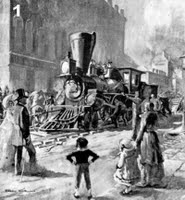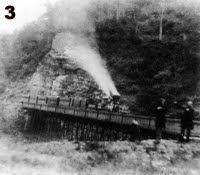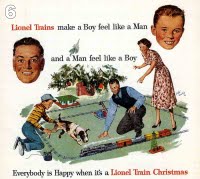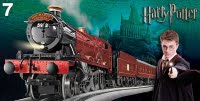A Brief History of the Railfan Hobby in Canada - Part 1 of 5


 Click on each picture for a closer look!
Click on each picture for a closer look!Many of us spent our youth (and often well beyond) haunting railways and railway yards as well as participating in railfan trips and then working to duplicate these railways in miniature. In this serialized series of postings, we will publishing for the first time an article by Derek Boles on the topic of railfanning in our area, Here is Part 1 ....
A Brief History of the Railfan Hobby in Canada - Part 1 of 5
by Derek Boles
In just the few years since its inception in 2001, the Toronto Railway Historical Association has become the leading advocate for railway preservation in Toronto. The TRHA is working as a full partner with the City of Toronto to build the Toronto Railway Heritage Centre, a project that has finally, after two decades of inaction, seen much tangible progress in the last two years and is scheduled to open in 2010.
In many respects the TRHA is building on a foundation established by several generations of railway enthusiasts here in Ontario and elsewhere in North America. In this article, I will provide a brief history of railfan organizations in general, with an emphasis on those that operated in the Toronto area.
Enthusiasm for railways among the general public dates back to the beginnings of the railway era. When the first locomotive in Canada was built at the Toronto Locomotive Works in 1853, it took five days to move the engine from the foundry at Queen and Yonge through the streets of Toronto to the nearest railhead on Front Street. Thousands of Torontonians gathered to watch the snail-like progress of the locomotive as it was pinch-barred inches at a time west along Queen Street and south on York Street. After the Ontario, Simcoe & Huron Railway began regular operations in May 1853, hundreds, possibly thousands, of Torontonians bought tickets simply to enjoy the novelty of riding on a train.
Many of the best known authors of the 19th century published detailed accounts of their rail journeys, including Charles Dickens, Mark Twain, Henry David Thoreau and Walt Whitman. Railroads dominated popular culture and railroad themes were reflected in books, poems, songs, movies, advertising, magazines, theatre and art. Newspapers assigned reporters to the railway station since much that was newsworthy happened there. For over a hundred years, everyone had a relative who worked on the railroad and almost all intercity travel in Canada was by train.
In the last generation born in the 20th century, that personal connection with railroading has been lost. For most Canadians, intercity rail travel doesn’t exist outside the Quebec City to Windsor corridor. The media usually only devotes space to contemporary railroads when there are problems to report such as late commuter trains, labour strikes, derailments and other accidents. Most often, railways are in the news when motorists ignore crossing signals and pedestrians are killed or injured while trespassing on railroad property or doing something stupid that puts their lives at risk.
Yet, there are literally millions of people who still love trains and who feel a chill down their spine when they hear the lonesome and melodic sound of a train whistle. Hundreds of thousands of people around the world consider themselves to be rail hobbyists and spend considerable sums of money on models, books, videotapes and other railroad artifacts. Tens of thousands of books have been published about railways, about the businessmen and engineers who built them, about their engines and rolling stock, the history of individual companies, their premier passenger trains and their stations, their construction and financing, and books that just celebrate the nostalgic romance of a bygone era.
Toy trains no longer enjoy the widespread popularity they did in the post World War II era, when the New York-based Lionel Corporation sponsored huge displays in department stores and advertised extensively on national television. Fortunately the worldwide Thomas the Tank Engine phenomenon has made millions of children aware of trains and especially of steam locomotives, whose prototypes disappeared from mainline railways over half a century ago. No one under the age of 55 can even remember when steam locomotives were operational on regular trains.
Images accompanying Part 1
#1 - In 1853, the locomotive Toronto moves through the streets of its namesake city from the Toronto Locomotive Works located at Yonge & Queen Streets. Torontonians had never seen a locomotive before and the five-day-long move attracted much attention as it was moved to the nearest Ontario, Simcoe & Huron tracks at Front and York Streets.
#2 - Nothing is known of this photograph other than it was probably taken in the 1850s judging by the clothing styles. Unlike most stiffly posed photographs of the era, it shows a group of ebullient young men (and one woman) crowding onto an early train car. In the early years many people rode trains just for the novelty of the experience.
#3 - This photograph is the earliest known image showing North American railfans at a photo run past. It shows the Artists' Excursion at Tray Run, Maryland in 1858. The six-car train consisted of a studio-darkroom in the baggage car, a dining car, a smoking car, a parlor car with a piano and two sleepers. Three of the artist/railfans on the excursion can be seen on the right.
#4 - This well known painting by Edward Lamson Henry, The 9:45 Accommodation, illustrates the importance of railways to most communities in the 1860s. The arrival of every train was a major social occasion in small towns throughout southern Ontario.
.
#5 - Railway stories have long been a popular elements of Hollywood movies, beginning in 1903 when the American film industry was still based in New Jersey. Even today, long after railways have faded from public consciousness, several movies a year are released with rail themes.
#6 - Lionel was tremendously successful in large part because of its clever marketing that struck deep chords in the family psyche. What dad could resist a product that promoted family harmony and a deeper relationship between father and son?
#7 - Most rail enthusiasts are aware of the tremendous impact of Thomas, the Tank Engine in build enthusiasm for trains among young children. As they grow older, The Harry Potter books and movies featuring the Hogwarts Express helps to maintain the interest.
Posting by Derek Boles, TRHA Historian
Click here to read Part 2.
Click here to go back to Part 5.
.










<< Home